Find and eliminate sources of suspended clay particles
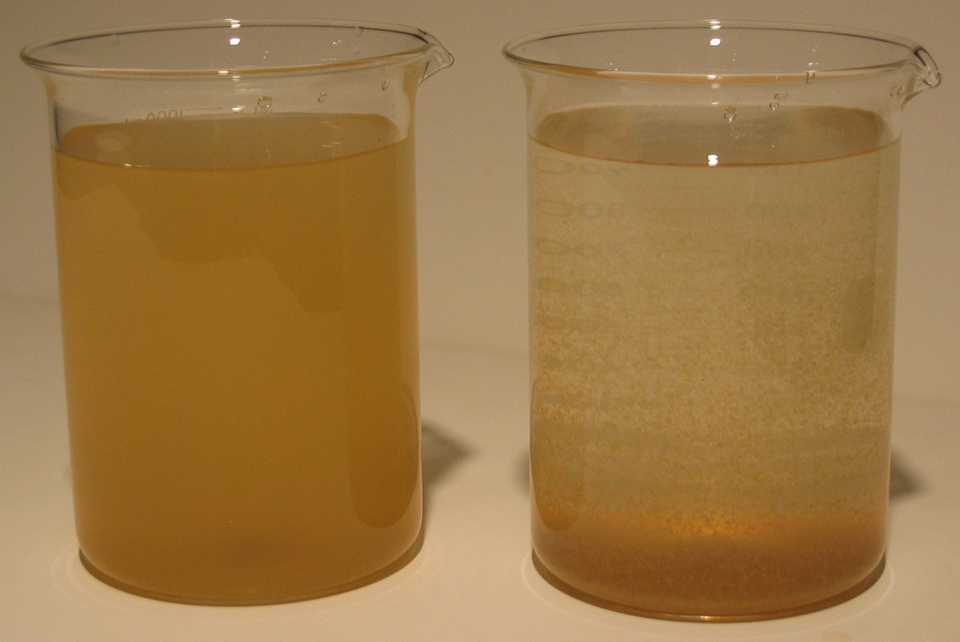
Turbidity from suspended soil particles is a common problem in aquaculture ponds, especially freshwater ponds with low total dissolved solids concentrations. The clay particles that enter ponds in runoff can be suspended by wave action, aerator-generated water currents, and the activity of aquatic organisms.
Colloidal clay particles have a net negative electrical charge on their surfaces, so they repel each other. Thus, fine soil particles can remain suspended indefinitely in some waters. Turbidity from these particles restricts light penetration and reduces primary productivity.
Corrective actions
The most effective means of correcting clay turbidity are to find and eliminate the sources of suspended clay particles. For example, if the source is erosion of bare soil in the watershed, vegetation can be established on the denuded area or the turbid runoff can be diverted from a pond. Where embankment erosion is the source, the erodable slopes should be protected with a layer of stone, grass planting, or pond liner.
However, in some ponds, soil particles remain suspended in water long after their source has been eliminated. Further treatment may be needed.
Limestone
Many times, muddy ponds have low-alkalinity, acidic water. The application of agricultural limestone to increase alkalinity and pH can cause clay particles to settle in some ponds. In waters with modest turbidity, the initiation of a phytoplankton bloom through fertilization often causes clay particles to flocculate and settle.
Turbid ponds initially should be treated with agricultural limestone if total alkalinity is below 20 to 30 milligrams per liter, and fertilized with nitrogen and phosphorus. The effects of fertilization in removing turbidity often can be enhanced by applying 50 to 100 kilograms per hectare of cottonseed meal or other plant meal in combination with the fertilizer.
Flocculating agents
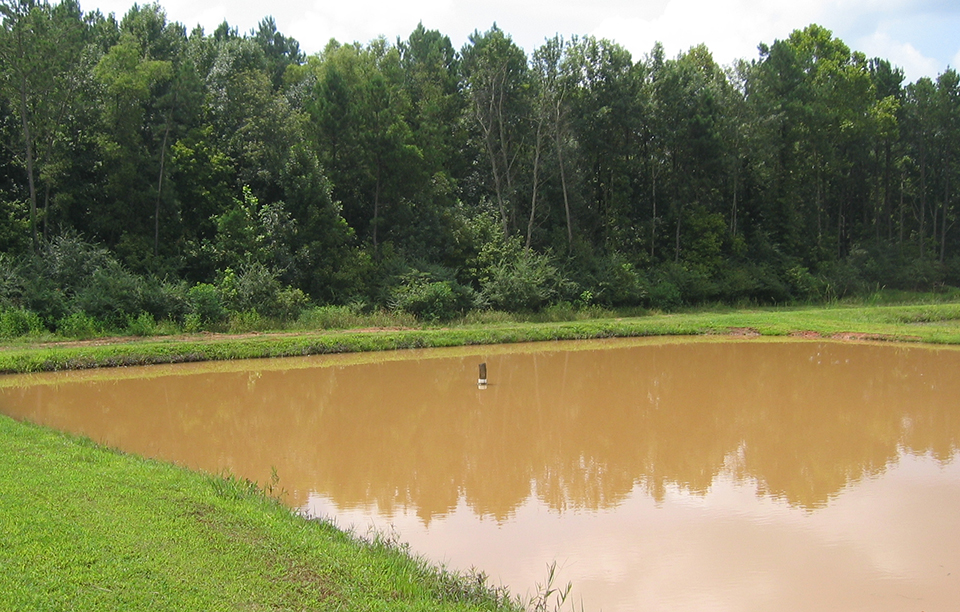
When liming and fertilization are not effective, flocculating agents can be applied to precipitate suspended clay particles and clear water of turbidity. The most common agents are organic matter, usually hay; calcium sulfate, commonly called gypsum; and aluminum sulfate, often called alum.
Organic matter
The use of organic matter to treat turbidity is problematic because of the large quantities needed. The treatment rates usually are 2 to 3 tons per hectare of hay or 500 to 1,000 kilograms per hectare of animal manure. Such large applications of organic matter can deplete dissolved oxygen and cause mortality in the culture animals.
Gypsum
Where water contains high concentrations of the major cations calcium, magnesium, sodium, and potassium, the charges on clay particles tend to be neutralized and the particles quickly flocculate and precipitate. Thus, highly mineralized waters seldom remain “muddy” for long.
The principle of gypsum treatment is to increase calcium concentration and encourage the flocculation of clay particles. Gypsum should be applied at 300 to 400 milligrams per hectare for best results. Although this is a very high treatment rate, the calcium and sulfate that result from the dissolution of the gypsum are neither harmful to the aquatic life in the pond nor undesirable in pond effluents.
The gypsum dose for a 1-ha pond of 1 meter average depth would be 3,000 to 4,000 kilograms per hectare spread uniformly over the pond surface. Depending upon the hydraulic retention time, the calcium concentration would be elevated for months or even years to provide future protection against turbidity from suspended clay particles.
Alum
Alum dissolves in water to temporarily increase the concentration of aluminum ions. Aluminum ions are trivalent and many times more effective than calcium ions in flocculating soil particles. In most water, an application of 25 to 30 mg alum per liter effectively removes clay turbidity within a few hours. Some clays are more difficult to flocculate, so it is advisable to conduct simple trials to determine the best alum treatment rate for a particular pond.
A 10,000 milligrams per liter alum solution freshly prepared by dissolving 10 grams alum in 1 liter of distilled water is needed to conduct the trials. One-liter samples of water from the pond should be placed in eight clear glass vessels and treated with 0.0, 1.0, 2.0, 3.0, 4.0, 5.0, 6.0 and 7.0 ml of the alum solution to provide progressive alum concentrations of 0 to 70 milligrams per liter.
The water in the vessels should be stirred vigorously for 30 seconds immediately following the addition of alum solution and then left undisturb-ed for one hour. The lowest concentration of alum that clears turbidity defines the treatment rate. Alternatively, the test can be repeated at selected 5.0 milligrams per liter increments of alum to further define the treatment rate.
The appropriate quantity of alum should be dissolved in a tank of pond water and splashed or sprayed over the pond surface. Alum forms sulfuric acid in water, so workers should wear appropriate clothing, gloves, and eye protection. If applied with a spray-er, the spray equipment must be thoroughly cleaned after use to prevent corrosion.
Alum should be applied on a calm, clear day to prevent wind action or rainfall from disturbing the floc. Usually, particles of floc become obvious within 10-15 minutes after treatment, and the pond clears of turbidity within a few hours.
Because alum forms sulfuric acid in water, it reduces the total alkalinity and lowers pH. Each milligrams per liter of alum consumes about 0.5 milligrams per liter of total alkalinity. To assure residual total alkalinity and a safe pH, alum treatment rates should not exceed the total alkalinity in concentration. For example, if the total alkalinity is 25 milligrams per liter, the maximum safe alum treatment is 25 milligrams per liter.
Ponds with low alkalinity can be treated with agricultural limestone at 1 to 2 tons per hectare to increase total alkalinity. This treatment in itself may cause turbidity to precipitate, but if it does not, alum can be safely applied.
Effluents from alum-treated ponds do not have toxic concentrations of aluminum because it precipitates in ponds as aluminum hydroxide. Aluminum hydroxide is a common mineral in soils and not harmful to culture systems. Aluminum reacts with phosphate to form an insoluble aluminum phosphate precipitate. Thus, phosphate fertilizer often must be applied to ponds soon after alum treatments to establish a phytoplankton bloom.
Because of their acidic properties and the toxicity of aluminum ions under acidic conditions, discharges of alum into natural water or onto soil can be ecologically degrading. Alum should be stored in a dry place and handled carefully to avoid spills.
(Editor’s Note: This article was originally published in the December 2004 print edition of the Global Aquaculture Advocate.)
Now that you've reached the end of the article ...
… please consider supporting GSA’s mission to advance responsible seafood practices through education, advocacy and third-party assurances. The Advocate aims to document the evolution of responsible seafood practices and share the expansive knowledge of our vast network of contributors.
By becoming a Global Seafood Alliance member, you’re ensuring that all of the pre-competitive work we do through member benefits, resources and events can continue. Individual membership costs just $50 a year.
Not a GSA member? Join us.
Author
-

Claude E. Boyd, Ph.D.
Department of Fisheries and Allied Aquacultures
Auburn University
Alabama 36849 USA[117,100,101,46,110,114,117,98,117,97,64,49,101,99,100,121,111,98]
Tagged With
Related Posts
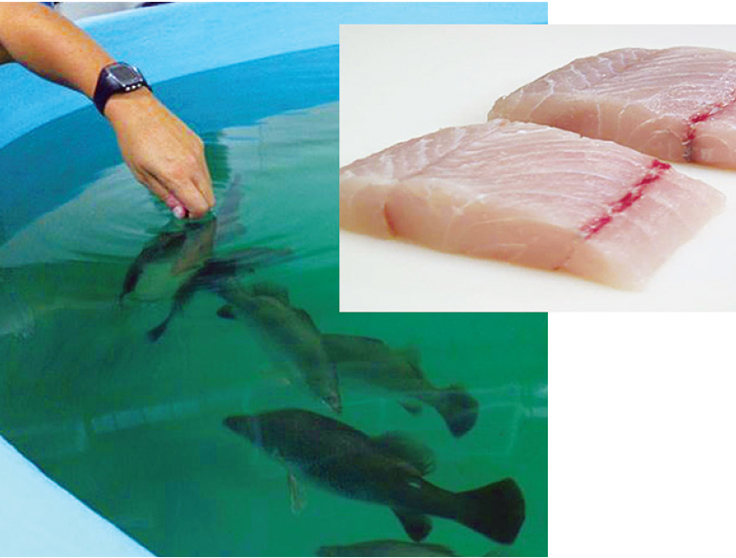
Intelligence
Adding flavor complexity to farmed barramundi
Organoleptic attributes such as flavor and aroma are among the most important factors that influence consumer acceptability and demand for fish products. Consumers have identified farmed fish as less complex and lacking “sealike” or “sea-fresh” flavors and aromas.
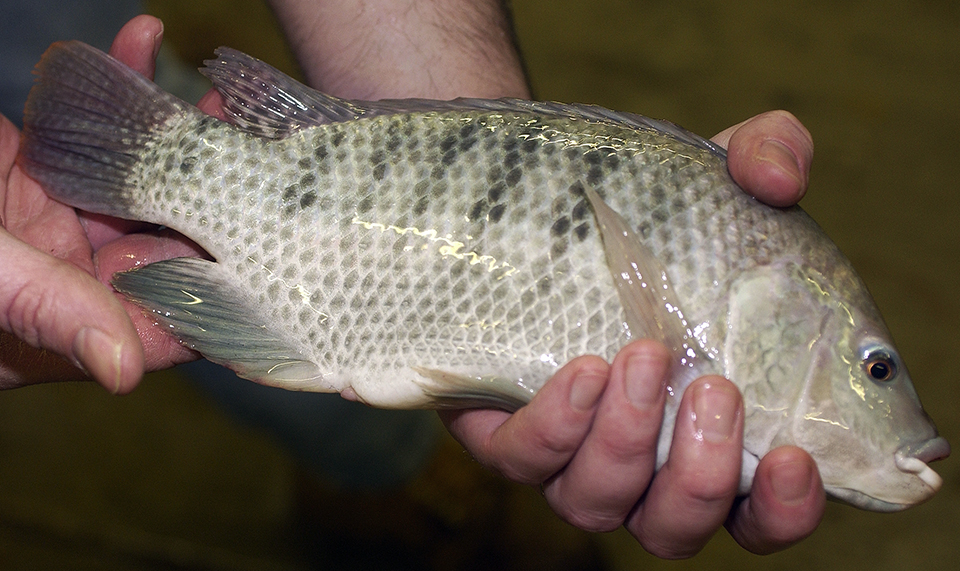
Health & Welfare
Bacterial, chemical residues impact tilapia quality
Both bacterial pathogens and chemical residues can affect the quality of farmed tilapia products. In production systems, Vibrio bacteria quickly proliferate following disease outbreaks.
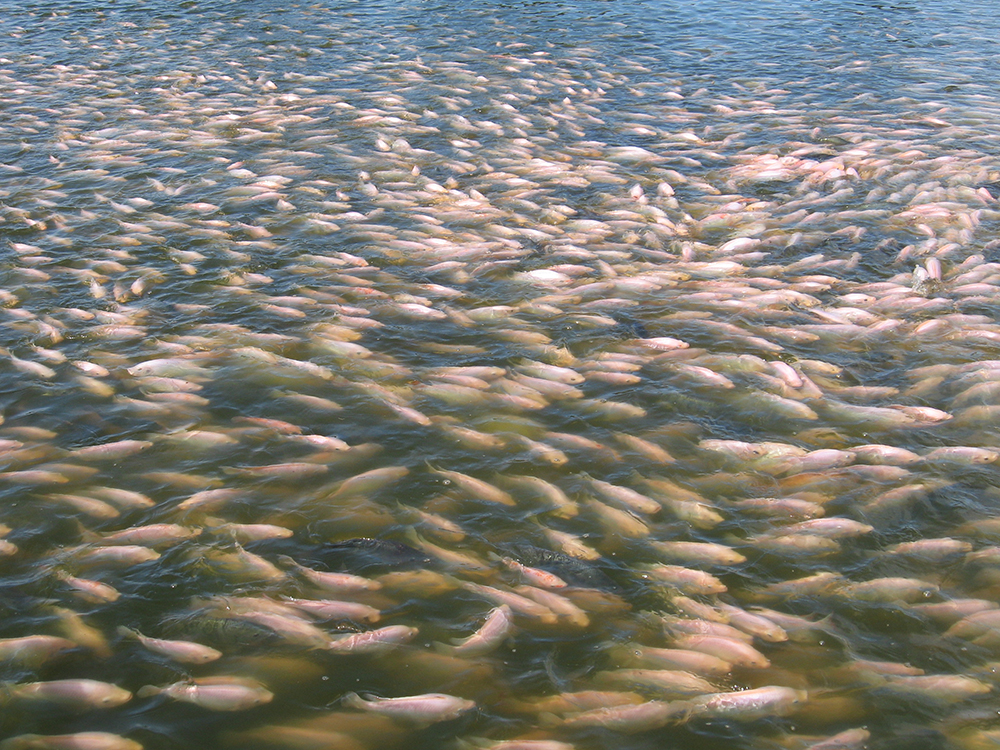
Intelligence
Considerations for tilapia farming in saltwater environments
Tilapias are farmed in a variety of production systems, but mostly in freshwater and low-salinity waters. But tilapias are an excellent candidate for aquaculture in brackish- and seawater because they can tolerate a wide range of water salinity.
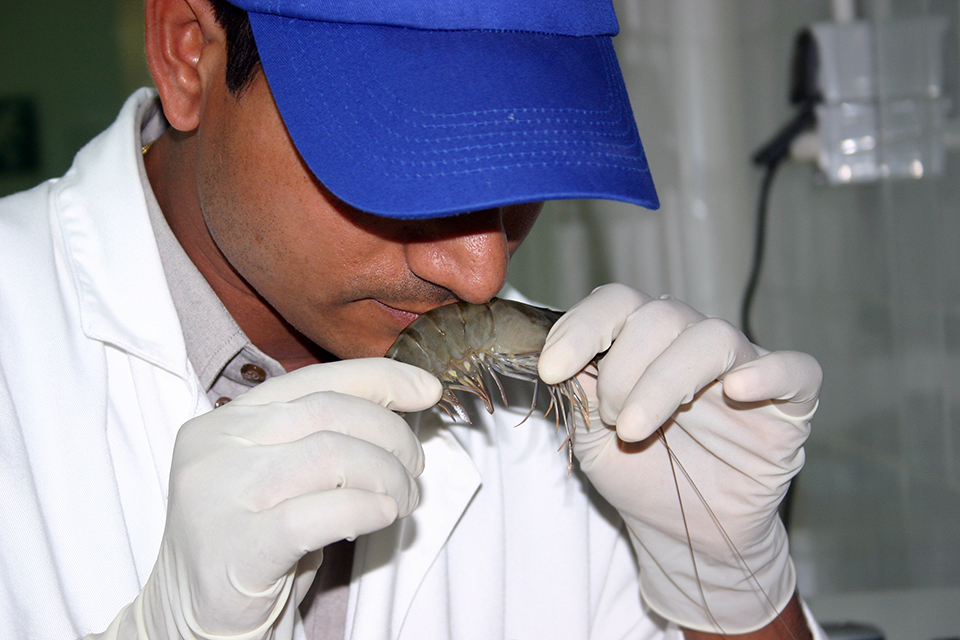
Intelligence
Off-flavors in aquaculture products, part 1
Off-flavors in pond and recirculating aquaculture systems have occurred through the biological production of geosmin and 2-methylisoborneol. The compounds are rapidly absorbed through the gills of fish, but depuration can require days or weeks.

